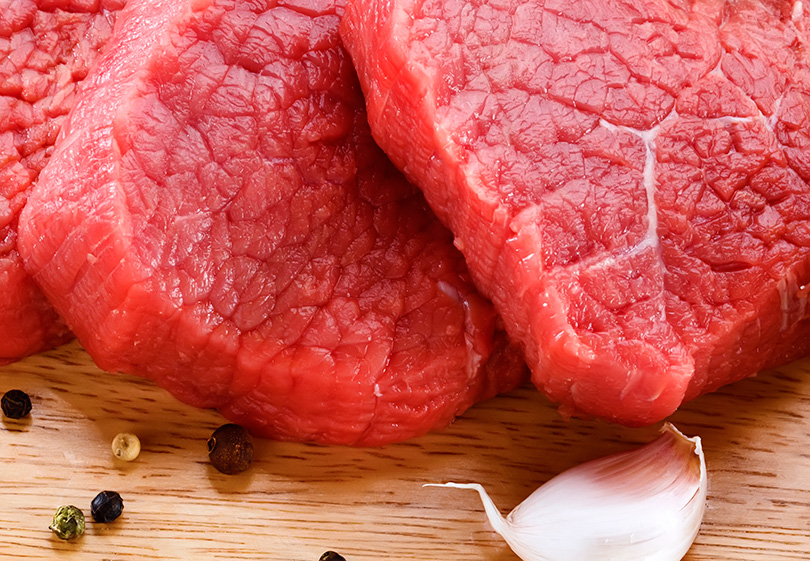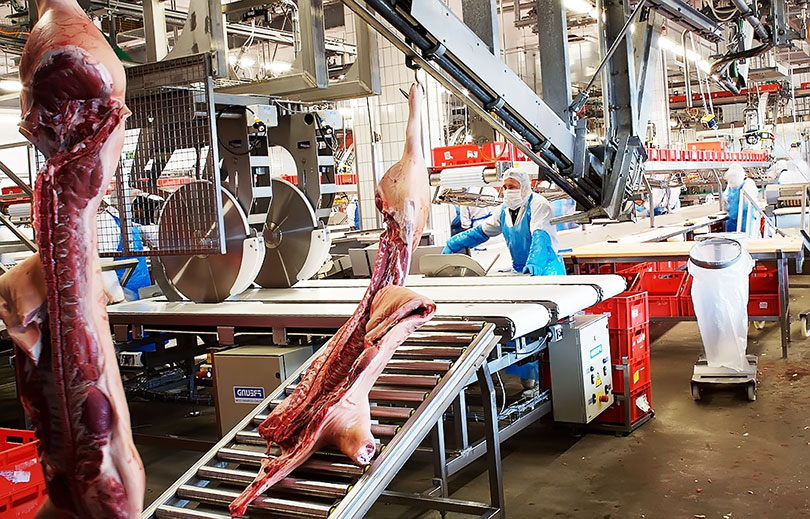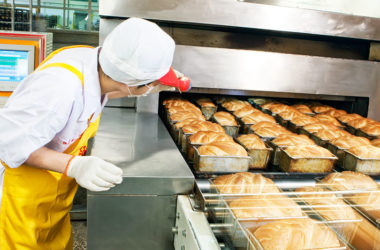According to the report of the BCC, a market research firm, the global market for equipment for the food and packaging industry will amount to 35.1 billion dollars by 2020. United States This prediction represents an average annual growth rate (CAGR) average of 4.2 percent during the forecast period. But the question is, how and why does this growth occur?

Dependence on meat and food
Before the industrial revolution, 95 percent of American families lived in rural areas and depended on meat and food that had been grown and harvested locally. But the industrial revolution led to the fact that the displacement of the population has become more urban, while the need for transport and packaging of food products in the growing cities stimulated the demand for serial industrial production methods that transformed radically the food system as we know it today.
Modern equipment for the food sector
However, more than one hundred and twenty years later we are in the second industrial revolution. The revolution is a faster and more efficient automation team. As an innovation-based company, General Kinematics worked to stay at the forefront of the revolution with innovative automatic equipment.
Currently, foods grown in one area are sent to processing plants in another area and then shipped to factories where fresh, canned or frozen foods are produced. These foods are sent to hundreds or even thousands of miles for consumption in the country and around the world.
As a result, the food industry sector became a large-scale industry. Due to the stricter regulatory standards of the Food and Drug Administration (FDA) on the quality and purity of food products, consumer demand and the economy of new equipment and food packaging is designed to operate in accordance with the sanitary standards, it is faster than human production, and produces more permanent end product. This processing and packaging technology is currently focused on preserving maximum nutrients and sensory properties while increasing the shelf life of food products without any adverse effect on the quality or taste of the food.
Market in constant growth
BCC further predicts growth in the food processing and packaging sector in the coming years, and this explains the increase in the growth of families with working parents who want to manipulate food and beverages for comfort. These changes in consumer behavior will require the equipment to meet the requirements of the new safety and quality standards, as well as the need to reduce workforce and optimize production processes.
Equipment for handling and processing of materials General kinematics, such as fluid bed processors, vibrating conveyors and grinding drums, offers the food industry with the most modern automated equipment that meets the requirements.
According to the BCC report, the food packaging market is expected to grow by 14,400 million dollars. The United States in 2015 to almost 17.3 billion dollars. The United States in 2020, after having demonstrated a five-year period of 3.6 percent. The food processing market should reach 11.2 billion dollars. The United States and 14.2 billion dollars. In 2015 and 2020, respectively, in a five-year lifespan of 4.8 percent.

In addition, a new report on PMMI market research, packaging and the Association of processing technologies, according to the BCC report and suggests that the transition to a more healthy and convenient options – is an opportunity for the OEM manufacturers. The report, entitled The Trends of 2017 in the field of food processing, analyzes the intelligence of 40 interviews and 150 references. PMMI results reflect the BCC report and show that markets, channels and technology are changing the way consumers buy food for the next 15 years and predict that this could lead to significant changes in production and search.
Food processing market
The companies that participated in the survey in 2017 indicated that:
– Almost half will spend MORE on capital equipment in the next 12-24 months.
– Half of the companies that foresee the need for technological equipment, and 3 of every 4 companies will look for packaging equipment.
– Food manufacturers supply two thirds of their equipment to OEMs. UU Due to faster delivery, parts availability and technical support service.
– The best attributes when buying equipment are cost and quality.
– More than half of food manufacturers use individual equipment and turn to OEM for integration
– Half of the companies focus on increasing the level of automation in the next three to five years
– Robotics is now used in 30% of processing operations and in 94% of packaging operations, and both areas predict greater use.
– 3 out of 4 companies measure the overall efficiency of the equipment (OEE) and look for reliable technology to increase uptime.
– End users recommend improving the technical characteristics of the equipment, which focuses on cleanliness, operator safety and flexibility of switching.
Technological improvements
– Technological improvements include:
1. Faster reading time for the vision team
2. Self-diagnosis for preventive maintenance
3. Ready-to-Connect
Characteristics of future equipment
In addition to flexibility, safety is a priority. With this in mind, these are some of the important characteristics of future equipment:
– Strict food safety regulations must be met.
– Highly selective classification to reduce food waste.
– Smaller batch processing equipment and more compact production.
– Inspection equipment for the detection and separation of smaller foreign particles.
– Highly flexible equipment with easier change.
– Large automation equipment, which combines several operations.
– Equipment that reduces and saves energy consumption.


